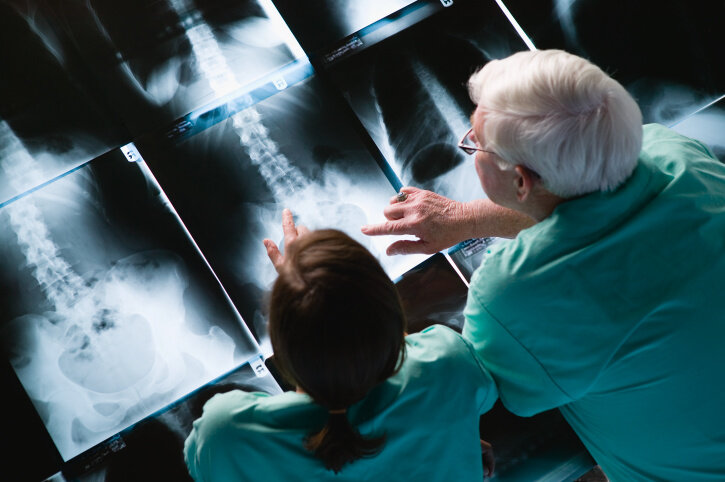Cervical Spine Conditions
Neck pain often has complex origins. The human spine is made up of bone, discs, muscles, ligaments, tendons and other tissues which can make it difficult to pinpoint the exact source of pain. Depending on the cervical condition, conservative treatments may be enough, but surgery may also be necessary.
Cervical Stenosis
The narrowing of the spinal canal, called spinal stenosis, can happen as a result of the degeneration and subsequent enlargement of the facet joints, spinal ligaments, bony end plates, and the intervertebral discs.
Herniated Disc (Cervical)
Herniation describes an abnormality of the intervertebral disc that is also known as a "slipped," "ruptured" or "bulging" disc. This process occurs when the inner core (nucleus pulposus) of the intervertebral disc bulges out through the outer, more fibrous layer that surround the disc (annulus fibrosis).
Spondylolisthesis (Cervical)
Spondylolisthesis occurs when one vertebra slips forward on the adjacent vertebrae.
Cervical Trauma/Fractures
In the case of trauma, dislocations and fractures can result in an unstable spinal column. They can occur in any region of the spine and may be associated with neurological injury.
Cervical Tumors
Spinal tumors can be either primary (originating in the spine itself) or secondary (metastases of cancer that originate elsewhere in the body).
Syringomyelia
Syringomyelia is a disorder in which cerebrospinal fluid enters the spinal cord, forming a cavity known as a syrinx.
Spinal Infection
Though infections of the spine are rare, if they are neglected for a period of time, or if there is a delay in diagnosis, they can become a significant source of pain and disability. Bone and joint infections anywhere in the body can be crippling and life threatening.
Meet the Doctors
The doctors at the American Center for Spine and Neurosurgery have more than 60 years' combined experience successfully treating thousands of patients with spine, brain and peripheral nerve conditions.



